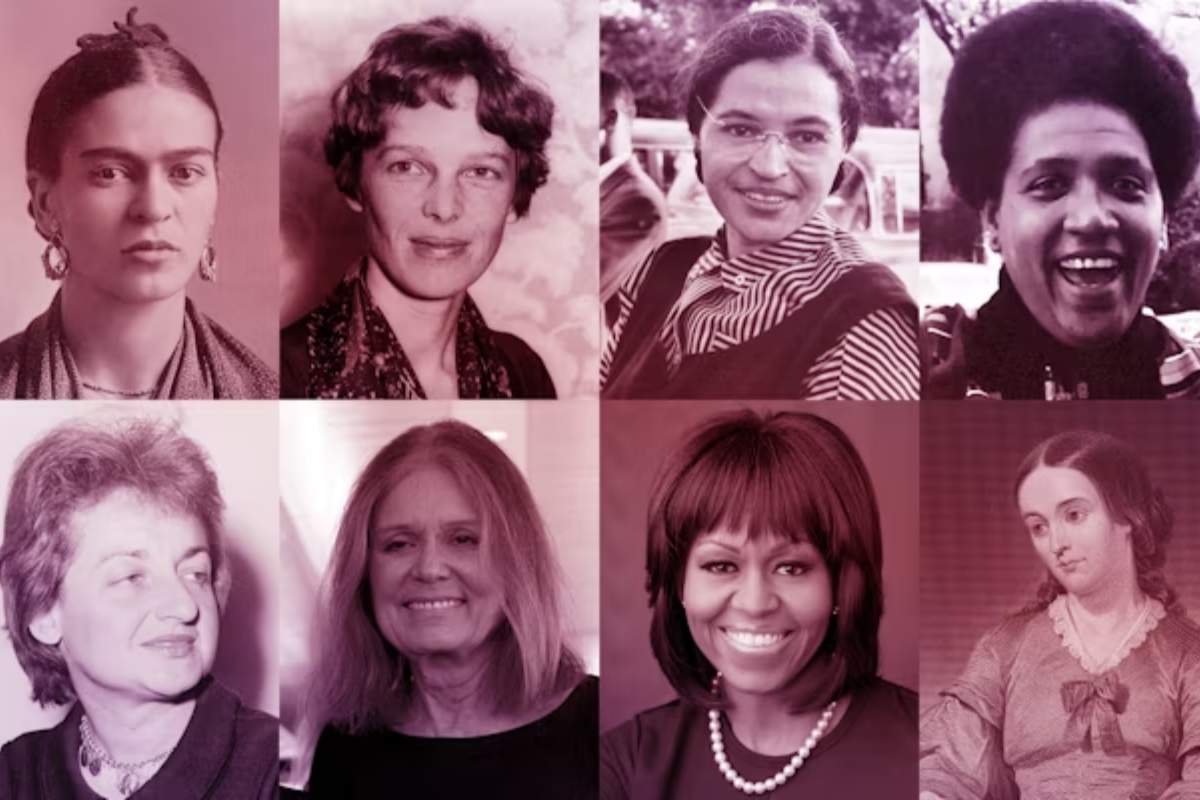It’s often said that one day alone could never be enough to fully express the achievements, sacrifices, and contributions of women. And let’s be honest, that’s true! Women’s impact is felt every day in every corner of our lives, so daily recognition is the least they deserve. But in the United States, a whole month has been set aside to do just that: National Women’s History Month. All this began in 1978, not too long ago, with a mission-sparked movement: celebrating many women who shaped, built, and pushed forward this nation. These pioneering women fought battles, braved obstacles, and opened long-shut doors. Their stories remind us that progress doesn’t come overnight; it’s forged through strength, courage, and relentless determination.
National Women’s History Month is a focused moment to pause, reflect, and appreciate the incredible contributions that often go unsung. It’s about remembering those who paved the way, lifting those who are leading today, and inspiring future generations of women who will continue to make history. But why do we celebrate Women’s History Month? What ignited the movement that started it, and how has it morphed over time? Understanding the origin and history of this month gives significance to what it brings because it is an annual remembrance. In this blog post, we will learn its origin, themes, and significance and in what way it’s still relevant in today’s times.
Women’s History Month: How it was born and why it’s observed in March | JUST THE FAQS
Why Do We Celebrate Women’s History Month?
Celebrating the month for women allows society to reward those women who fought for equality, promoted movements for fundamental changes in society, and contributed through innovative breakthroughs in activities like politics, science, literature, and arts among others. Many women were not given the proper recognition they deserved for working in the past, and this month gives them voices and opportunities to be recognized.

Women’s Month is a call to continue the crusade for gender parity in personal and professional life. On this day, women are seeing and continue to see inequalities in earnings, leadership, and standing in many professions. During Women’s History Month, we remember not just their past successes but today’s battles and victories of women all around the world.
How did Women’s History Month begin?
The celebration of women’s contributions to history began in the 1970s as part of the feminist movement and originated as “Women’s History Week” in Sonoma County, California, in 1978. Coinciding with International Women’s Day on March 8th, the event quickly gained popularity across the U.S. In 1980, President Jimmy Carter issued a proclamation declaring the week of March 8th as National Women’s History Week, acknowledging that women’s roles were often overlooked in history. Due to the growing support, the National Women’s History Project advocated for expanding the celebration. In 1987, Congress officially designated March as Women’s History Month, ensuring an annual opportunity to honor women’s achievements and contributions throughout history.
Women’s History Month in the Current Generation

In today’s generation, Women’s History Month has evolved into a platform for celebrating contemporary female leaders and addressing ongoing gender issues. Beyond honoring historical figures, it highlights challenges like gender pay gaps, reproductive rights, and the need for more women in leadership.
Social media plays a crucial role in amplifying women’s voices, with online campaigns, digital storytelling, and virtual events sparking global conversations about gender equality. The movement also embraces intersectional feminism, acknowledging the unique struggles of women from diverse backgrounds. Additionally, it emphasizes the importance of men as allies, encouraging discussions on how they can support gender equality by advocating for equal pay, fair representation, and respectful treatment. Together, these efforts aim to inspire future generations and create a more inclusive world.
Different Themes over the Years
Every year, Women’s History Month adopts a theme to focus on specific aspects of women’s history and contemporary issues. These themes serve as a framework for educational activities, discussions, and events. Since its inception, Women’s History Month has tackled diverse subjects, from recognizing women in sports to honoring women’s role in fighting for civil rights.
Some notable themes over the years include:
- 1999: Women and Health – Acknowledging women’s contribution to healthcare and highlighting health challenges unique to women.
- 2012: Women’s Education, Women’s Empowerment – Emphasizing the importance of education in empowering women and breaking down gender barriers.
- 2021: Valiant Women of the Vote – Refusing to be silenced – Honoring the women who fought for suffrage and ensuring their voices continue to resonate in the modern fight for voting rights.
These themes allow for the celebration to adapt to contemporary social issues, creating a bridge between historical struggles and the modern fight for gender equality.
The Presidential Message: A Tradition of Recognition

Each year, the U.S. president issues a proclamation to commemorate Women’s History Month. These messages often acknowledge the contributions women have made to the country’s history and emphasize the importance of continuing to strive for equality. The presidential message highlights key accomplishments and encourages all Americans to celebrate the women who have shaped the nation’s past and present.
For example, in a recent Women’s History Month proclamation, the president acknowledged the critical role women played during the COVID-19 pandemic, particularly in healthcare, education, and caregiving roles. The message also stressed the ongoing need to close the gender pay gap, ensure reproductive rights, and support women in achieving leadership positions. These presidential proclamations set a tone for the national observance of Women’s History Month, reaffirming the country’s commitment to recognizing women’s invaluable contributions to society.
Conclusion
Women’s History Month recognizes how far women have come while bringing to the foreground the goal of equality in many fields. It was a week, then to celebrate and honor the contributions of women in all realms before it became observed as a month-long tribute. It highlights, not only what happened over time but also the leaders who have made history or are in the process of doing so.
The observance also clears the path for annual themes, and presidential proclamations give rise to discussions on inclusivity and progress. Yet, it also serves as a reminder of the continuing appeal for society, both today and tomorrow, to continue to strive for opportunities for women. Such an acknowledgment inspires action toward building a more inclusive, equitable world where women are respected, valued, and empowered.









